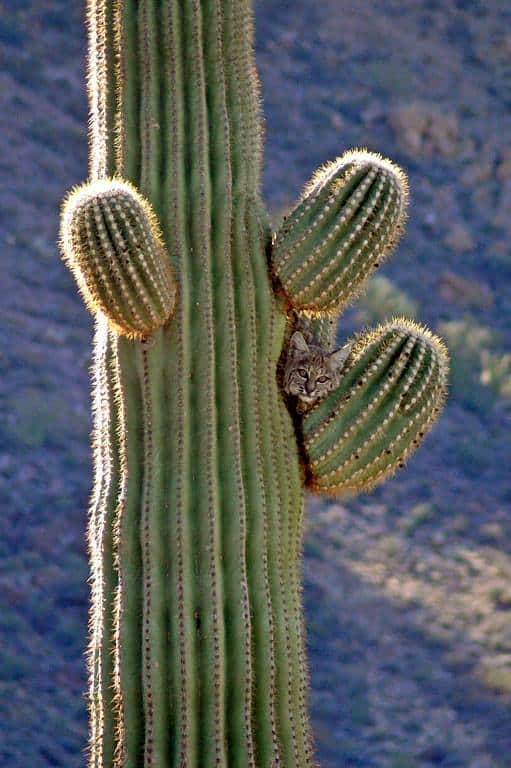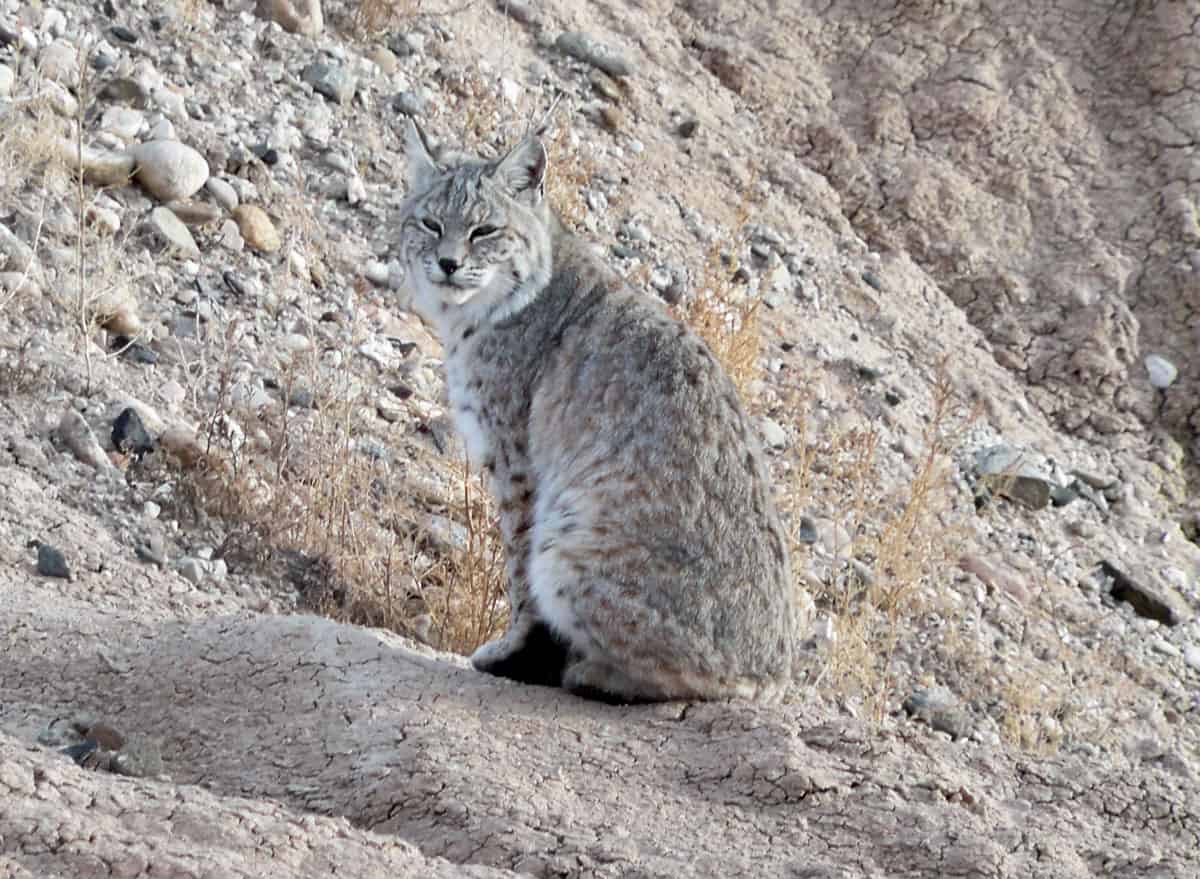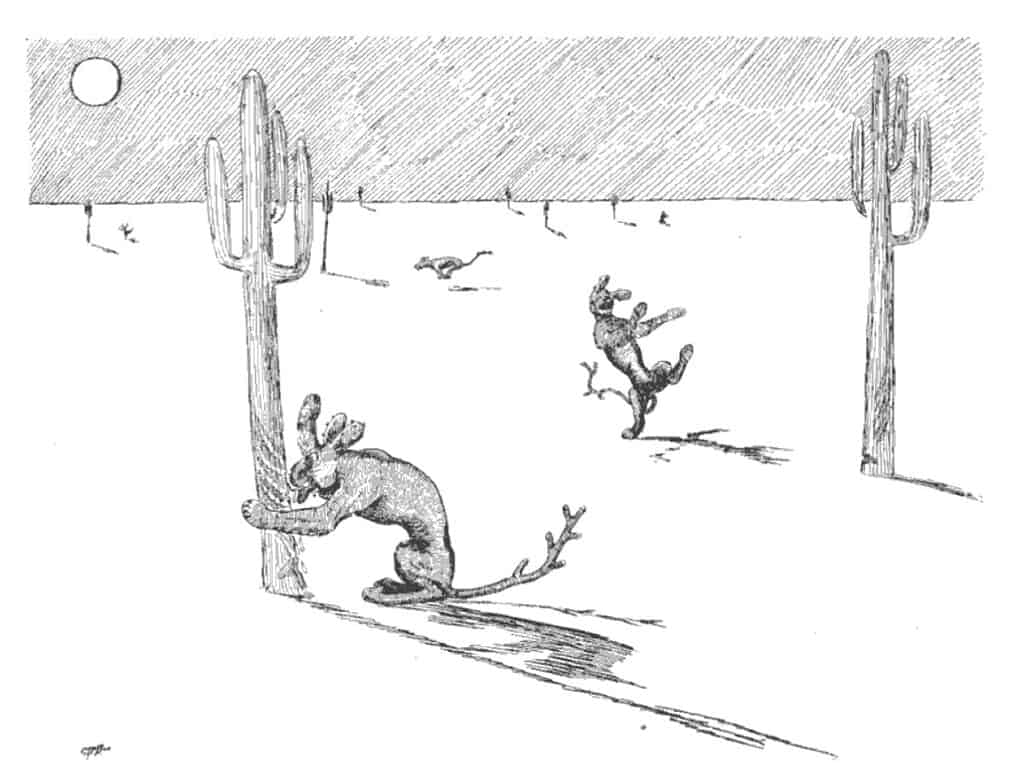They are known for their ability to climb trees and rocky cliffs in pursuit of prey, but did you know that they can also climb cactus?
An image that went viral from the Organ Pipe Cactus National Monument is a super cute one, but it also looks so painful. A small bobcat can be seen peering out from the arm of a Saguaro Cactus (Carnegiea gigantea).
The prickly spines that run vertical along the cactus are extremely sharp and can grow up to three inches (7 centimeters) long. As sharp and strong as steel needles, these spines have been known to puncture unlucky Bighorn sheep that collide with the tall cactus.
So how and why do bobcats climb saguaro and get away injury free?

Why Do Bobcats Climb Cactus?
The main reason that bobcats climb cactus is to run away from predators. Bobcats (Lynx rufus) are a medium-sized cat that is native to North America. Bobcats can be found in a range of habitats that stretch from southern Canada to Oaxaca, Mexico.
A Safe Spot to Hide from Predators
The bobcat has several predators, notably mountain lions, coyotes, foxes, owls, wolves, alligators, and humans. Saguaros are tall, tree-like cacti that can grow multiple arms from the main trunk and are the largest cactus in the United States.
The thick, spiny branches of a saguaro cactus can provide a safe hiding spot for a bobcat, where it can rest and avoid predators. The height and natural perch offered by the cactus offers a safe place to flee from potential predators.

A photographer was able to capture a bobcat that fled up to the very top of a Saguaro cactus to flee from a mountain lion in Arizona’s Sonoran Desert. The mountain lion had chased the bobcat across a road before the bobcat climbed up to the top of the cactus.
Others have reported similar sightings:
A Safe Place to Rest
The height of Saguaro cacti also offers the bobcat a place to rest. Similar to why bobcats climb trees, climbing Saguaro in desert locations gives the wild cat a place to rest without worrying about predators and other dangers.
The height of the cactus also provides the bobcat with a good lookout station.

Why Don’t Bobcats Get Injured Climbing Cacti?
Bobcats are very adept climbers. They also have very thick foot pads that protect them from the sharp spines of a Saguaro cactus. The combination of being proficient climbers with their clawed and thickly padded paws allows the bobcat to climb these cacti without any injuries.
Inspiration for the American West myth: Cactus cat?
The sight of a bobcat tucked up high on a Saguaro cactus makes me wonder if this inspired the American West myth about the cactus cat?

The cactus cat is a mythical creature from the American Southwest. As with many creatures from folklore, its appearance and behavior vary between stories, but it is generally depicted as a wildcat with some distinct cacti-like features.
The cactus cat often has sharp, spiny quills like a cactus, and a tail that ends in a sharp, bony blade. Some versions of the myth suggest that this tail is used to slice open cacti, which the cat then allows to ferment in the desert sun. It would later return to drink the fermented cactus juice, much like a cat version of a bacchanal.
These creatures are often portrayed as being nocturnal, causing mischief and making wailing noises in the night that frighten other animals and people. The cactus cat is a symbol of the harsh and unforgiving desert, embodying both its danger and its stark, prickly beauty.
This article was originally written on February 28, 2021 and has since been updated.






